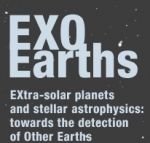Displaying items by tag: CAUP
Centro de Astrofísica da Universidade do Porto (CAUP)
The Centro de Astrofísica da Universidade do Porto (Centre for Astrophysics of the University of Porto - CAUP) is the largest astronomy research institute in Portugal. It is a private research institute, non-profit making and recognized as being of public utility by the Portuguese Government.
- Its objectives include the promotion and support of astronomy through
- research
- education at graduate and undergraduate levels
- activities for primary and secondary schools
- science outreach and the popularisation of astronomy
- CAUP is responsible for the scientific management of the planetarium of Porto.
Research teams:
- Origin and Evolution of Stars and Planets - Star Formation and Early Evolution; Planetary Systems (Exoplanets); Stellar Populations and Stellar Evolution
- Galaxies and Observational Cosmology - Physical properties of massive galaxies; Galaxy cluster astrophysics; Structure formation paradigms; Dynamical dark energy; Varying fundamental constants
EXOEarths program
The EXOEarths program aims at doing frontier research to explore:
- in unique detail the stellar limitations of the radial-velocity technique, as well as ways of reducing them, having in mind the detection of Earth-like planets
- to develop and apply software packages aiming at the study of the properties of the planet host stars, having in mind the full characterization of the newfound planets, as well as understanding planet formation processes.
These goals will improve our capacity to detect, study, and characterize new very low mass extra-solar planets. The results of this project will have a strong impact on the exploitation of future instruments, like the ESPRESSO spectrograph for the VLT. They will also be of extreme importance to current state-of-the-art planet-search projects aiming at the discovery of other Earths, in particular those making use of the radial-velocity method.


